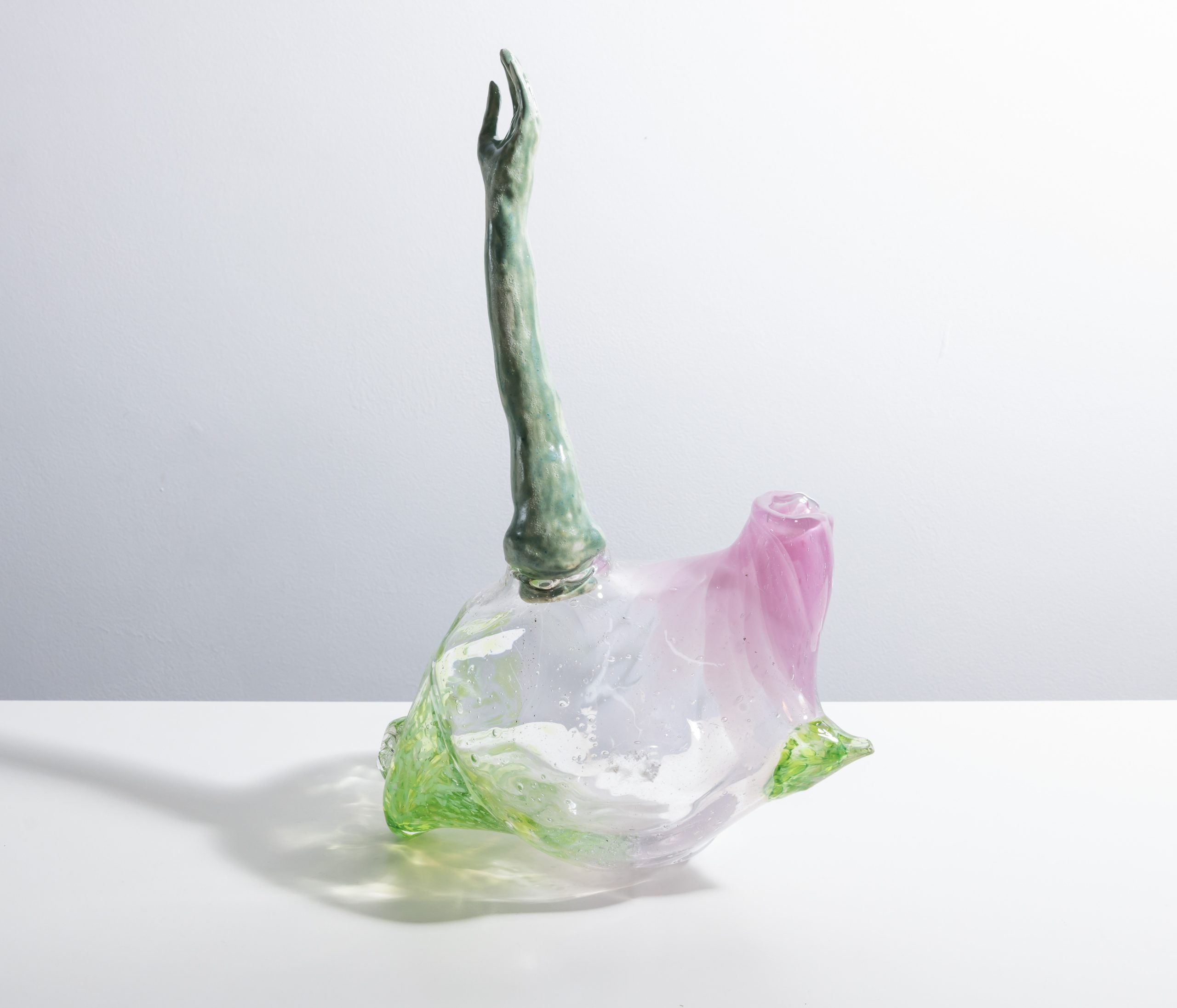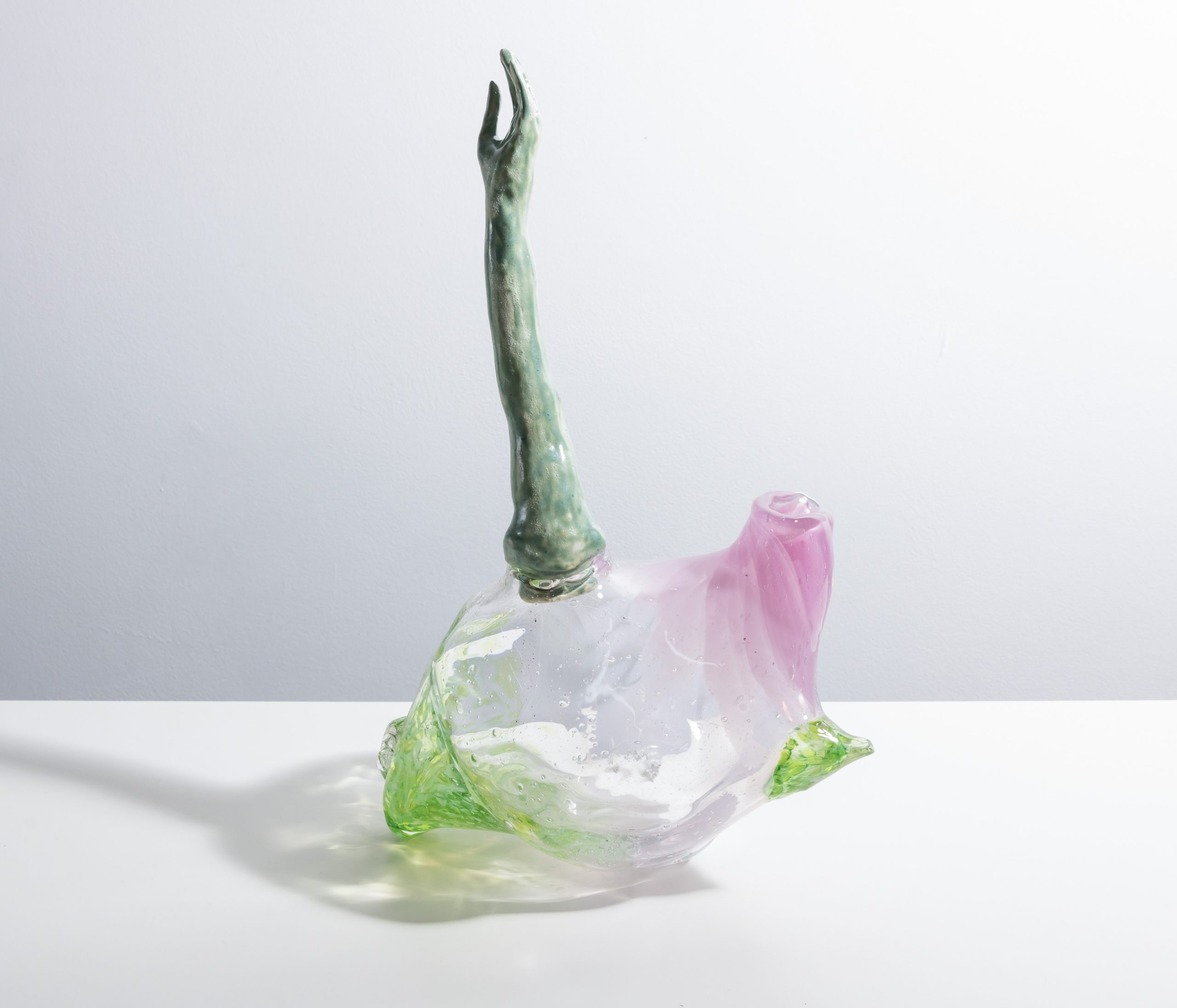Mirror of Mysteries:
Women Artists and the Surreal Legacy
Ingrid Berthon-Moine
Leonora Carrington
Anna Perach
Chantal Powell
Emma Witter
Curated by Huma Kabakci
5 October – 3 November 2024
Opening: 5 October, 18h – 21h

Mirror of Mysteries:
Women Artists and the Surreal Legacy
Ingrid Berthon-Moine
Leonora Carrington
Anna Perach
Chantal Powell
Emma Witter
Curated by Huma Kabakci
5 October – 3 November 2024
Opening: 5 October, 18h – 21h

“Anyway, Art [making] is a magic which makes the hours melt away and even days dissolve into seconds, isn’t that so, dear
lady?”
Leonora Carrington, The Seventh Horse and Other Tales
About the project
The exhibition titled Mirror of Mysteries: Women Artists and the Surreal Legacy with artists Ingrid Berthon-Moine, Leonora Carrington, Anna Perach, Chantal Powell and Emma Witter reimagines and questions surrealism in the 21st-century context through the feminine psyche, symbolism and the power of objects. Responding to La Boulangerie!’s non-profit display space, architecture and design, the exhibition invites visitors to playfully discover artworks (some in hidden parts of the space such as the fridge, ceiling or shelves) and reimagine the Surrealist discourse.
Ingrid Berthon-Moine’s artistic practice, spanning sculpture, drawing, and video, explores the physical and cultural dimen-
sions of the human body. Drawing inspiration from diverse sources such as language, psychoanalysis, and feminism, Berthon-Moine weaves personal narratives into her work, challenging conventional understandings of human experiences like sexuality, illness, and death. Leonora Carrington was a British-born, naturalised Mexican surrealist painter and novelist. She lived most of her adult life in Mexico City and was one of the last surviving participants in the surrealist movement of the 1930s. Carrington’s work frequently explored themes of transformation, identity, and myth, incorporating symbols and narratives that reflected her interest in surrealism and psychoanalysis. Her paintings and writings use personal symbolism and dreamlike scenes to suggest deep explorations of her subconscious mind. Anna Perach’s practice explores the dynamic between personal and cultural myths with a special interest in how our private narratives are deeply rooted in ancient folklore and storytelling. In her work she interweaves female archetypes into sculptural hybrids in order to examine ideas of identity, gender, and craft. Similarly, the British artist and researcher Chantal Powell’s Jungian art-based research practice draws upon archetypal symbols of the collective unconscious in order to facilitate our understanding of the human psyche and our way of relating to the world. She’s currently working with motifs of the “embodied vessel” and its relationship to vegetative gods/goddesses in mythology. She works in a variety of mediums that include ceramic, glass, metal and textile. With a background in theatre design and scenography Emma Witter’s world building is illusionistic and temporal, using uncanny combinations of found and discarded objects and traditionally ‘non art’ materials. Working intuitively with found and rescued biomass – by-products of London’s restaurant industry or salvaged mud larking on the banks of the river Thames – Witter’s sculptures are intricate and beguiling. Her process is alchemical, transforming what has been discarded into what must be saved, and her art speaks to our contemporaneous notion of the sublime.
A century after its inception, Surrealism still profoundly influences contemporary visual artists and multidisciplinary practitioners, seamlessly integrating into modern art practices. Its blend with Jungian psychoanalytic theories enriches it with enduring imagery, methodologies, and philosophical depth. Many artists continue to delve into the unconscious as a wellspring of creativity, using Surrealism’s focus on dream-like imagery and subconscious exploration alongside Jung’s concepts of archetypes and the collective unconscious to navigate both personal and collective narratives in their work. Looking back, Freud’s theories often depicted women in ways that reinforced traditional gender roles and pathologized normal female behaviour. However, over the decades, certain strands of feminist theory have engaged more positively with psychoanalysis, using its insights to examine the construction of gender and sexuality, the dynamics of power and identity, and the unconscious dimensions of oppression. Feminist psychoanalysts like Juliet Mitchell and Nancy Chodorow reinterpreted Freudian ideas to highlight how societal structures shape psychic life and perpetuate gender inequality. Surrealist women painters used psychoanalytic concepts to explore themes of identity, sexuality, and the subconscious, often challenging traditional roles and representations of women.
In this exhibition, Huma Kabakci invites four contemporary women artists to transcend Carrington’s depiction of surrealism
and psychoanalysis by engaging site-specifically with La Boulangerie’s unique Rococo architecture and history.
